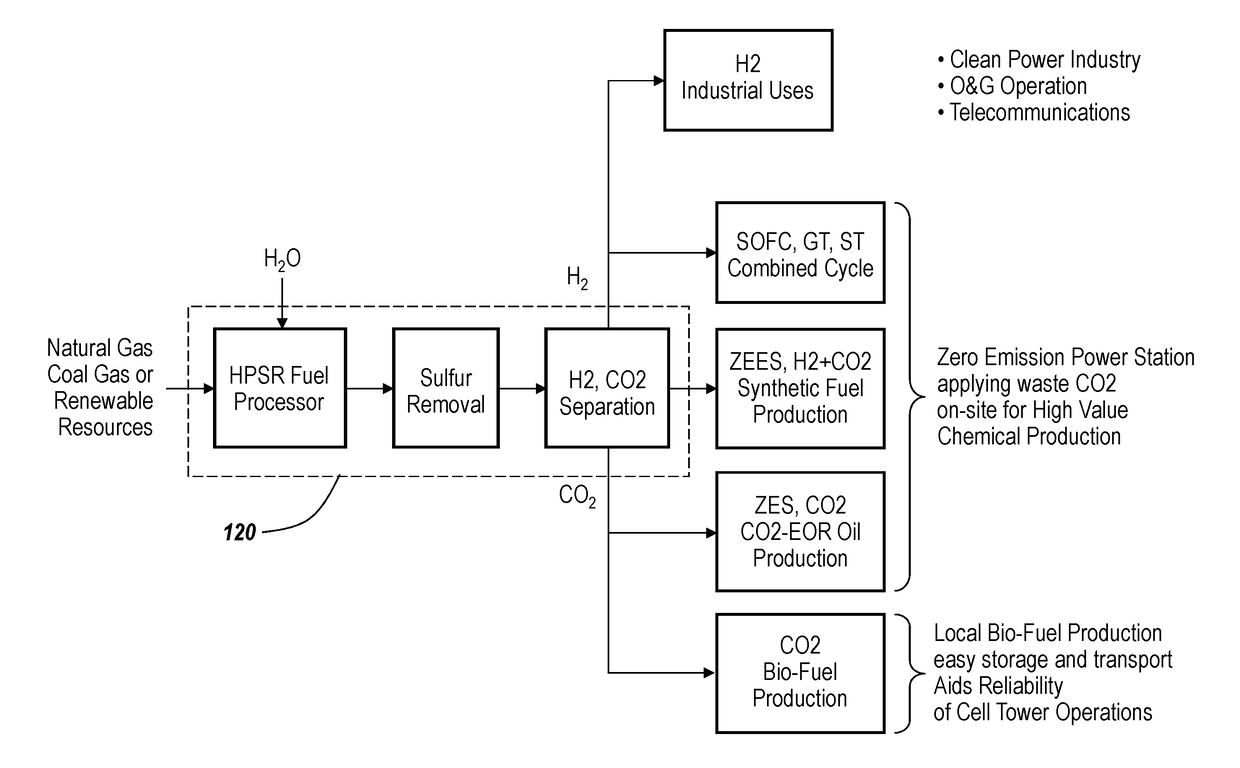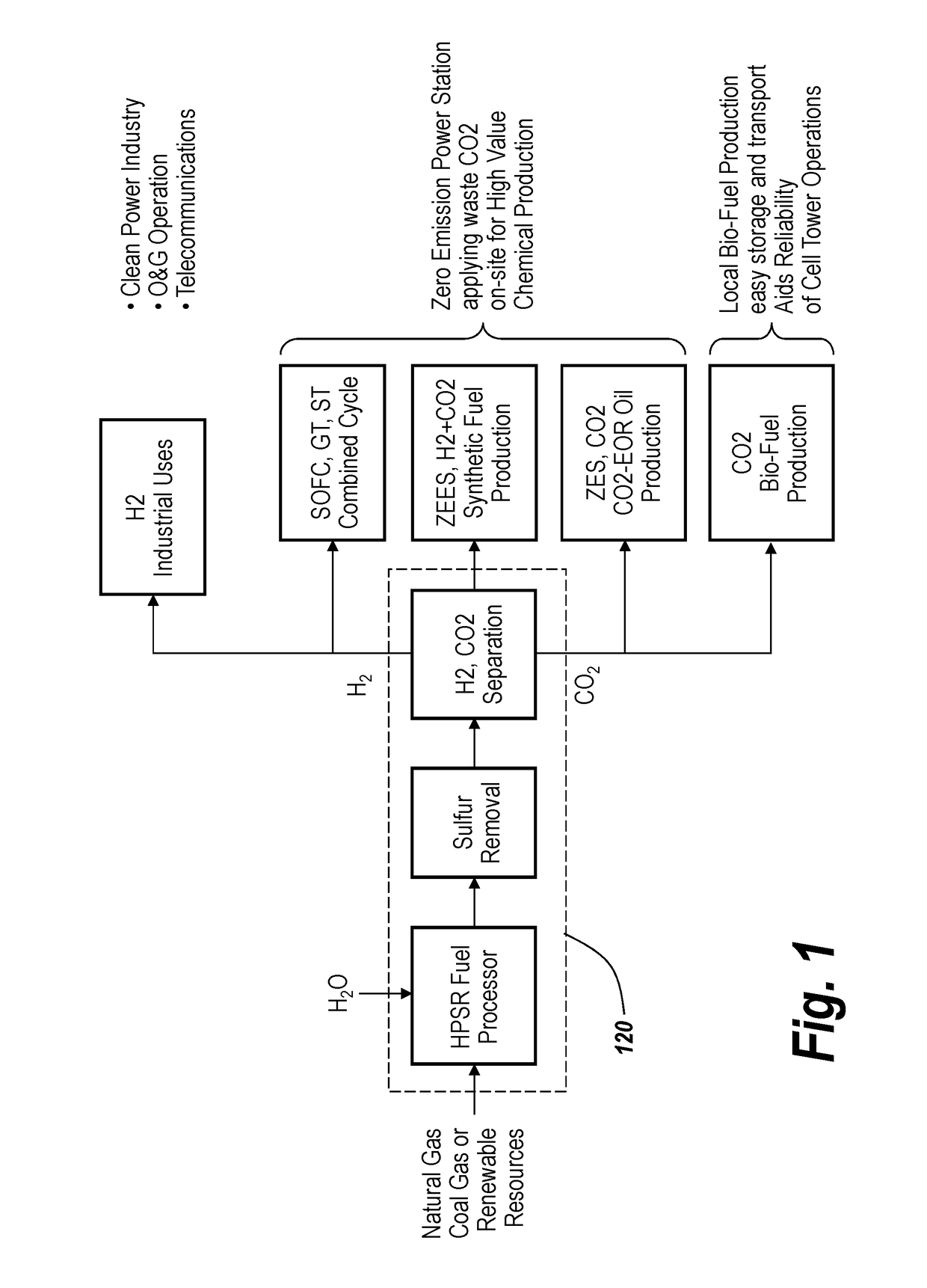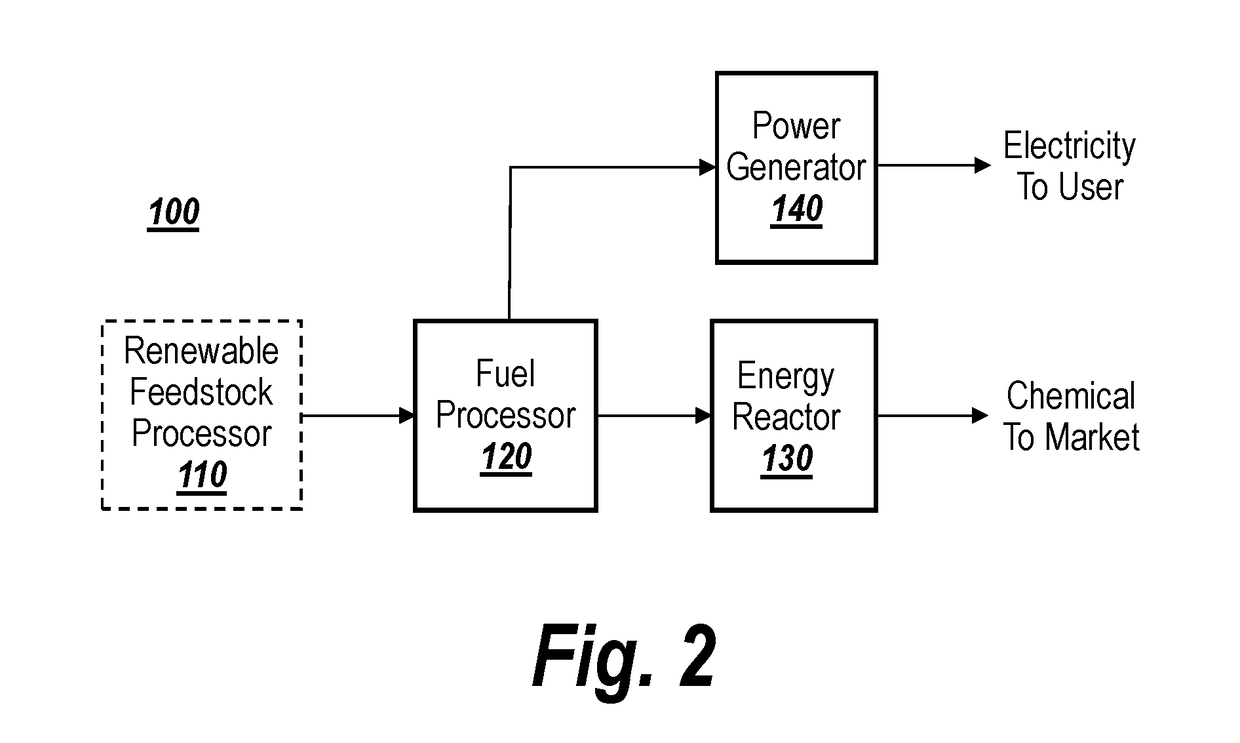Zero emission power plant with co2 waste utilization
a waste and power plant technology, applied in the direction of reciprocating piston engines, chemical/physical/physico-chemical stationary reactors, energy input, etc., can solve the problems of fuel cell systems, judged according to their operational principles, and inability to meet large-scale goals, so as to achieve the effect of eliminating co2 emissions and double carbon credits
- Summary
- Abstract
- Description
- Claims
- Application Information
AI Technical Summary
Benefits of technology
Problems solved by technology
Method used
Image
Examples
Embodiment Construction
[0026]FIG. 1 is a block diagram illustrating clean technology applications including the embodiments provided in the present application. A fuel processor 120 may receive natural gas, coal gas or renewable gas and process the gas to produce, H2, CO2 and / or a mixture of H2 and CO2. A sulfur component may be removed, and H2 and CO2 may be separated.
[0027]The produced H2 may be used for a solid oxide fuel cell (SOFC) system. Fuel cells produce clean exhaust without SOx or NOx through an electrochemical process rather than a thermodynamic process as used in traditional combustion systems. The SOFC also has an advantage in that its clean exhaust remains at a high temperature, which is suitable to drive a traditional system for additional power generation. The overall exhaust remains clean while the power output or the system efficiency doubles.
[0028]The SOFC may be integrated with heating, ventilation and air conditioning (HVAC) systems to perform functions for human comfort using the ho...
PUM
| Property | Measurement | Unit |
|---|---|---|
| temperature | aaaaa | aaaaa |
| temperature | aaaaa | aaaaa |
| temperature | aaaaa | aaaaa |
Abstract
Description
Claims
Application Information
 Login to View More
Login to View More - R&D
- Intellectual Property
- Life Sciences
- Materials
- Tech Scout
- Unparalleled Data Quality
- Higher Quality Content
- 60% Fewer Hallucinations
Browse by: Latest US Patents, China's latest patents, Technical Efficacy Thesaurus, Application Domain, Technology Topic, Popular Technical Reports.
© 2025 PatSnap. All rights reserved.Legal|Privacy policy|Modern Slavery Act Transparency Statement|Sitemap|About US| Contact US: help@patsnap.com



